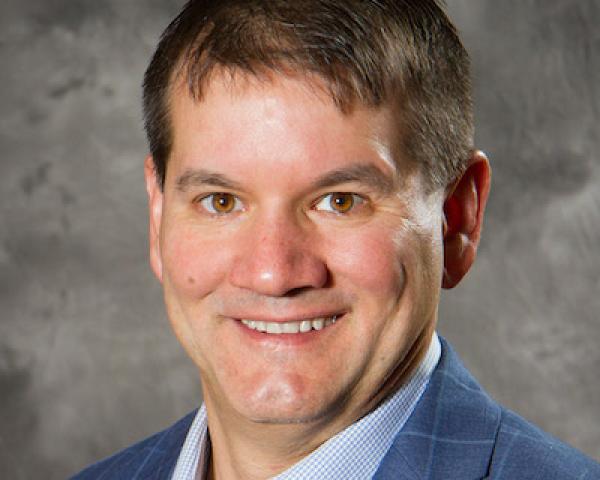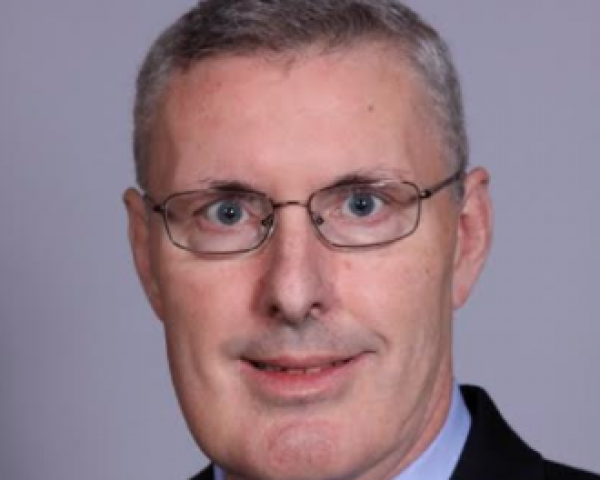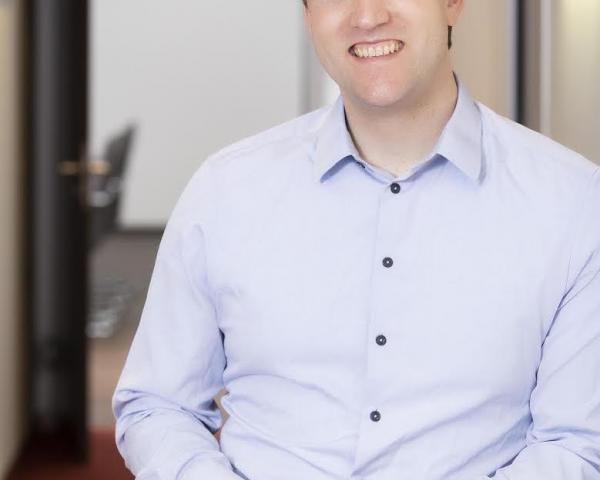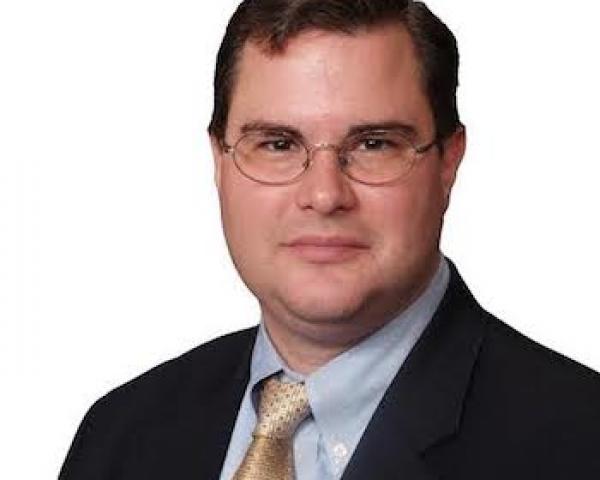Most observers would agree that the U.S. economy is largely composed of free market transactions. This generally means that prices for goods and services are determined by supply and demand with little interference from government forces. The U.S. is certainly not a pure free market or capitalist system, as various regulations at the state and federal levels influence the operation of various markets.
The arena of healthcare presents some unique challenges for policymakers. Constructing and tailoring an economic system that reaps the rewards of free market systems (innovation, aligned incentives, continuous improvement) while recognizing the emotional and ethical nature of healthcare delivery requires striking a delicate balance. This challenge is aggravated by influential stakeholders who largely disagree on both desired priorities and the impact of various healthcare policies and who often have financial stakes or other biases shaping their views. Recently, the dialogue has become openly rancorous, with bold accusations implying nefarious motives of other stakeholders. The focus of this paper is to discuss the uniqueness of healthcare delivery in a free market environment, highlight various perspectives and provide some principles and insights regarding solutions to accumulated problems and current challenges.
Healthcare in the marketplace: Different than other goods and services
In a civil and empathetic society that values human life above all else, it is impossible to properly value a life-saving treatment. Ethical and financial considerations conflict when decisions are required to choose performance of heroic, untested and expensive procedures. In these scenarios, who should be granted decision-making authority? Who should be obligated to pay for these services? Should the payer determine which services should be performed? What role should the government play, if any?
As this article is being written, a high-profile story of a dying British infant is circulating around the world and generating significant debate. His parents are advocating an experimental treatment in the U.S.; they have found a doctor willing to perform it, and have offered to pay for it themselves (partially through raised donations). It’s hard to argue, absent obvious cruelty, that parents do not have the best interests of their children in mind or that they should not have the freedom to purchase unconventional services and explore different healthcare solutions. Would anyone deny them the right to this experiment when there is no other life-saving alternative? Should the same choice then be made available for families that are not well-financed? If lines are not drawn, at some point we eventually run out of “other people’s money.” These ethical/financial dilemmas that exist today will become even more prominent in the U.S. as the population ages and new, expensive technologies rapidly increase our ability to prolong life.
The ability of healthcare delivery to improve life and save lives in some circumstances places healthcare in a different category than other goods and services. There are constant reminders that healthcare is different and that it is perhaps inhumane to view healthcare through a market-oriented lens. At the same time, many of the advances in healthcare have spurred from free market innovation. This innovation has benefited the world
— even economies without free markets. New cures and progress from experimental treatments are difficult to attain in government financed systems with strict protocols, prescribed procedures and limited budgets.
See also: What Makes U.S. Healthcare Different?
The U.S. leads the world in medical and pharmaceutical breakthroughs, and Americans are the first to benefit from new treatments. Unfortunately, we also pay significantly higher prices. High prices are combined with overutilization of services because of improper incentives in the health system, resulting in the primary recognized and discussed problem of today: the high cost of health insurance.
As most of the healthcare delivery in the U.S. is financed through various types of insurance mechanisms, the remainder of this article focuses on the free market challenges related to health insurance and the unintended consequences of insurance regulation.
Health insurance overview: Different than other insurance products
Insurance, in general, is a financial services product that allows individuals, groups of individuals or corporate entities to exchange some known amount of money (i.e., insurance premiums) for the guarantee of compensation for some future unknown loss (i.e., insurance claims). The specific dynamics of different types of insurance can vary greatly, however.
For example, automobile insurance and health insurance share some of the same basic operating principles, but there are very important differences between the two that create unique challenges for each industry to be able to effectively regulate and price the products in a fair and equitable way. Automobile insurance products provide the insured with financial coverage in the case that their car is damaged in a collision or by some other means (i.e., collision coverage) or that their car causes harm to themselves, another person(s) or other property (i.e., liability coverage). Most states require automobile owners to purchase minimum levels of liability coverage (or prove that they are able to finance the risk themselves), but none require the purchase of collision coverage.
There are many different levels of coverage and cost-sharing for the different types of automobile insurance products, which a car owner can then select based on their own financial situation and risk-averseness (i.e., no one plans to have a car accident, but some would rather pay a higher-known price upfront than risk a larger payment if an accident were to happen). These policies have clear maximum limits to what is covered in various situations. If a car accident occurs, the insurance company assesses the damage and identifies responsible parties. Then the insurance policy covering the responsible party will pay according to the limits and cost sharing the party purchased. If an uninsured car causes an accident, the owner of that car must pay for any repairs or liability out of their own pocket.
Premiums for automobile insurance are, in simple terms, based on average expected costs over a population of people who have insurance. The frequency of car accidents has not changed significantly over time, nor has the cost of cars increased at significant rates, which has led to relatively stable average premium increases on car insurance over time. There is some differentiation in premiums based on age and other factors that have been correlated with higher frequency of accidents; ratable factors vary based on state regulation. Competitive pressures have led to a very competitive market in the automobile insurance industry.
Health insurance is a slightly more complicated coverage with some important nuances. First of all, the individual who is covered under a health insurance policy is not always the one who selected or purchased that policy. In the U.S., many citizens get their insurance through their employer. The employer reviews various benefit options and insurance products and selects one on behalf of all of their employees. Insured employees are often not clear on the benefits they have or on what limits there are to their coverage. Even when an individual is the one selecting and purchasing benefits, the details of a health insurance policy are quite complex, and it is often unclear what is/isn’t covered for the many different types of medical services.
Additionally, there is an element of known future costs in healthcare. Some of us know that we will incur costs in the future, whether because we take a medication regularly, have a chronic condition that requires regular care or are expecting a baby. Insurers do not have all of the information the insureds do as to known future claims
— they must rely on looking at historical averages.
Also, in health insurance there is no assessment of “fault” when it comes to treatment. In auto insurance, if an accident is not considered to be your fault, you typically do not have to pay (unless the at-fault party is uninsured). With healthcare, there is no assessment one way or the other as to why a condition came about, only that it needs to be treated and whether or not you have coverage for that treatment.
Another important difference is the handling of the uninsured population. In automobile insurance, most states require a minimum amount of liability coverage, to make sure that if “un-ignorable” costs arise from an accident (for example, significant public property damage or personal injury), there is some coverage in place to pay for those costs. In health insurance, if someone without insurance coverage requires medical attention, they receive medical attention. If they cannot pay for their care, the costs fall to the system itself to absorb (which ends up being pushed back onto consumers as increased provider prices, which then result in higher premiums).
High costs create some questions around what should be covered under a health insurance policy and what should be left for a consumer to pay for themselves.
Finally, healthcare is very expensive, and many Americans would have difficulty paying for even moderate courses of treatment without insurance. These high costs create some questions around what should be covered under a health insurance policy and what should be left for a consumer to pay for themselves. Some argue that health insurance should be used for catastrophic coverage only, but often even basic services (such as having a baby) can be too costly for families to afford. On top of those concerns, some use of the healthcare system (e.g., diagnostic and preventive care) should be encouraged to potentially reduce the probability or cost of future health events. With catastrophic coverage only, many individuals would forgo the beneficial usage of the system.
This high cost and broad coverage of healthcare directly necessitate high health insurance premiums. And because of the nature of health
— that getting sick is often out of our control
— there is a lot of sensitivity around what’s “fair” in terms of who pays what premium. Is it fair for healthy individuals to pay very low premiums and sick individuals to pay very high premiums? What if the sick individuals were born with expensive genetic conditions (i.e., are sick through no fault of their own)? What about the individual making poor lifestyle choices that result in higher-than-average healthcare costs? These questions are often the focal point of what healthcare legislation tries to influence.
Impact of insurers on free market dynamics
A downside of using insurance to fund virtually all medical costs (absent cost-sharing) is that it ultimately raises costs by insulating consumers from medicine’s real prices. Elisabeth Rosenthal, MD, editor-in-chief of Kaiser Health News cites “the very idea of health insurance” as being partially culpable for the high cost of healthcare, acting as a middleman that blinds the true healthcare consumer from the costs of the services they are consuming. Consumer insulation from prices creates more demand for healthcare services (because they feel cheap to the patient), at times wastefully, which leads to price increases.
Rosenthal also argues that regulation of insurer profits can actually produce the opposite of the intended effect. Minimum Loss Ratio rules, which essentially limit the amount of profit and non-claim expenses an insurer can have relative to the premiums they charge, were enacted with the idea that reducing profit percentages would then reduce insurance premiums. Instead, the regulation created an incentive for insurers to “increase the size of the pie.” In other words, if an insurer was previously able to make 10% on a $100 premium ($10), after regulation limited their profits to 5%, they could make up the difference by charging a $200 premium instead (numbers are hypothetical for illustration only). And while insurers cannot easily double their prices, they are a critical party in negotiating prices with hospitals and physician offices. This incentive to increase premiums potentially conflicts, then, with the desire to negotiate lower prices (and, thus, lower cost). This view is not widely held in the insurance industry, but it does highlight potential unintended consequences of insurance market regulation.
Additionally, it is interesting to note the price changes over time of medical services that are not generally covered by insurance (i.e., services that do not have price insulation). Consumers have much more “skin in the game” and shop wisely for services such as Lasik eye surgery and cosmetic medicine. Not only have prices dropped for these services over the past 10-15 years, but customer service generally receives higher marks as providers are focused on demonstrating value for the purchased services. Although Lasik eye surgery might not be considered an “essential” health service to the average individual, this example shows that increased price consciousness might create a similar outcome for other services. Not all health services will benefit from this transparency (emergency services where there is no time to shop around, or some of the more “invaluable” services such as cancer treatment), but price insulation absolutely dilutes cost as a consideration for patients/consumers in choosing their care.
Federal health insurance regulation: A look back
The challenge of effectively addressing the high cost of healthcare has been highlighted by the federal legislative responses over the past decade. The originally enacted federal solution, the Patient Protection and Affordable Care Act (ACA) reflects the first significant federal attempt to regulate the commercial market. While the legislation was comprehensive and had an impact on all markets, it primarily attempted to reduce the number of uninsured individuals by offering new and expanded federal funding to the individual and Medicaid markets. Essentially, the ACA provided various levels of financial support depending on age, income and geographic-specific premium levels for individuals to purchase their own insurance policies.
At the same time, the ACA removed or altered some of the rating variables in the insurance system. Under ACA, insurance companies could no longer:
- Charge gender-specific premiums (based on cost curves, women were historically charged more than men at younger ages and less than men at older ages);
- Charge as much as was needed to be profitable for older members (highest vs. lowest age adjustment could only vary by a factor of three, whereas costs are typically five to seven times different);
- Adjust premiums based on health status (there are extreme differences in costs for healthy individuals vs. those with chronic conditions); and
- Deny coverage because of pre-existing conditions.
From an insurance company’s perspective, these regulations limited its ability to appropriately match up revenue to costs for its insured population, creating new challenges in the marketplace. These newly mismatched insurance prices disrupted normal market forces around the purchase of insurance. Young and healthy individuals were now being charged prices much higher than they felt they should be, based upon their personal use of the system
— the insurance product then became one of low value for them. Alternatively, older and/or sicker individuals were paying much less than they were costing
— the insurance product was of extreme value to them.
One of the key assumptions the ACA legislation made to operate successfully was that everyone must be insured.
The moral and political appropriateness of insurance premium subsidization can be debated, but it is difficult to disagree that the result of this regulation created a dynamic where lower-cost individuals saw less value in the insurance product than they did before, causing many of them opt out of purchasing it altogether, largely independent of their income. One of the key assumptions the ACA legislation made to operate successfully was that enrollment would reflect a reasonable demographic balance. Specifically, the architects of the ACA legislation projected that the age 18-34 population would need to represent 40% of the market for the market to function effectively. However, because of the loss of value described above and a too-weak mandate for coverage, the 18-34 proportion has hovered around 26-28%.
See also: How to Move Into the On-Demand Economy
Federal health insurance regulation: A look forward
The results of the 2016 elections put Republicans in full control of the White House and both houses of Congress, albeit without a filibuster proof majority in the Senate. This change allowed for a serious but measured response to repeal the ACA and replace it with a more flexible, market-oriented alternative. Several pre-election proposals have been compared to the ACA, focused on the impacts on rate changes by age and income levels. One of these proposals, authored by former representative Tom Price, now the Secretary of Health and Human Services, was closely modeled on the American Healthcare Act (AHCA) passed by the House of Representatives on May 4, 2017. The legislation provided age-based tax credits to most enrollees in the individual market as opposed to the ACA’s income-based credits, meaning that the financial assistance individuals receive in purchasing health insurance is fixed based on their age (which is correlated to their cost) and not scaled based on income or geographic premium levels.
Interestingly and surprisingly, the early versions of the Better Care Reconciliation Act (BCRA) in the Senate did not follow the AHCA direction and largely maintained the ACA framework and its income-based subsidies. Notwithstanding the larger changes in the structure and amounts of Medicaid federal funding, the primary BCRA reforms to the ACA are in the form of:
- Rating age bands more aligned with actual costs (i.e., giving insurers back the ability to charge premiums by age that more appropriately match to average costs); and
- State waiver flexibility expanding the bounds of Section 1332 (essentially giving states the ability to waive some of the rules imposed by the ACA under certain conditions and develop their own more state-specific healthcare solutions).
In effect, many of the challenges in ACA markets would remain if the BCRA is passed in its current form. The Republicans in the House and the Senate have been criticized for not having a solution ready while seemingly having years to prepare for this opportunity. The nature of the legislation suggests that the technical characteristics of individual market behavior is challenging to grasp. The complications suggest the need for expert review of how regulatory changes to health insurance markets elicit free market responses.
Conclusion
Healthcare delivery and the associated financing is complex, involving human well-being and, potentially, human life. It simply cannot be viewed through a purely free-market lens. The role of the insurer as a middleman between the consumer and the provider of healthcare services stifles some of the free market impacts, both because consumers are often unaware of (and thus unmotivated by) the actual price of care and because insurance companies are profit-driven corporations that will find ways to maximize their revenue in any regulatory environment.
Legislation crafted with a blindness of free market principles and the role of the insurer often will generate results that were not in line with the initial intent
— for example, Minimum Loss Ratio laws. At a minimum, policymakers should consult with unbiased market experts to understand the implications of their various proposals. Will they truly accomplish what they are intended to accomplish? Unbiased reviews of this type would be valuable for all healthcare stakeholders to understand
— without this expert assessment, the complexity of the healthcare system lends itself to a potential situation where we move forward with broad-reaching popular provisions without a solid understanding of what the aftermath would be for our health insurance system and our country.






















